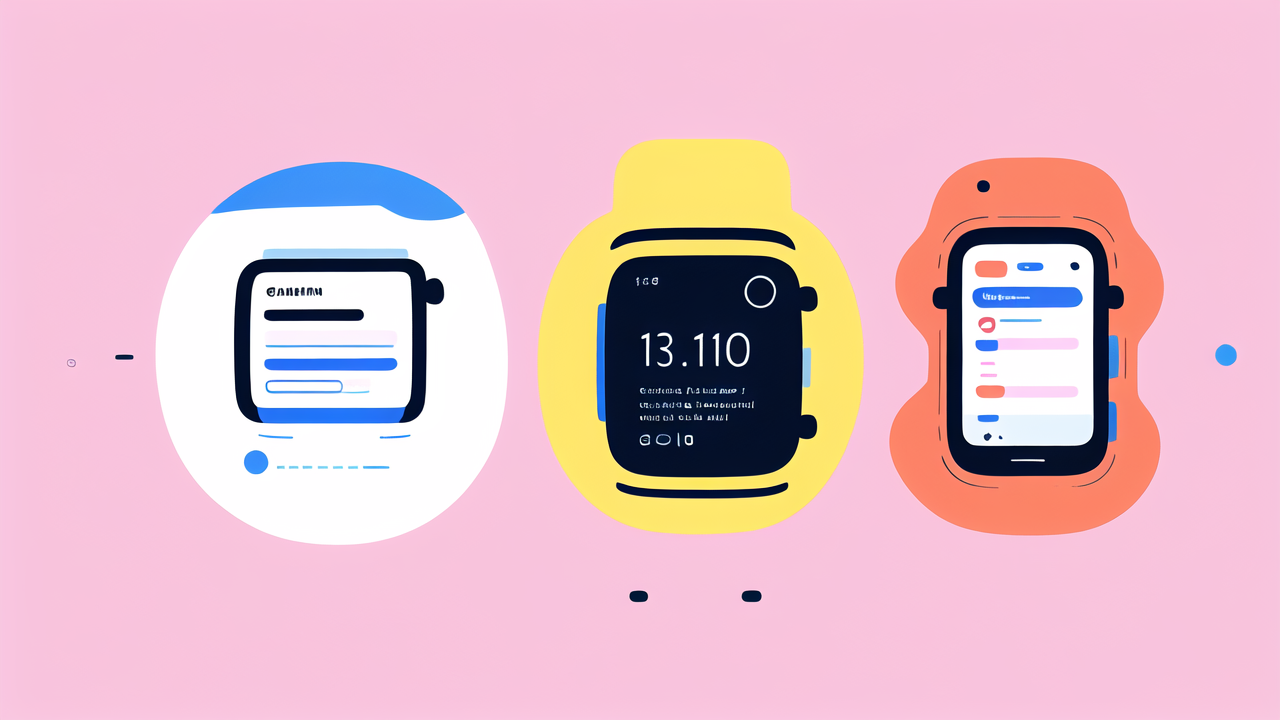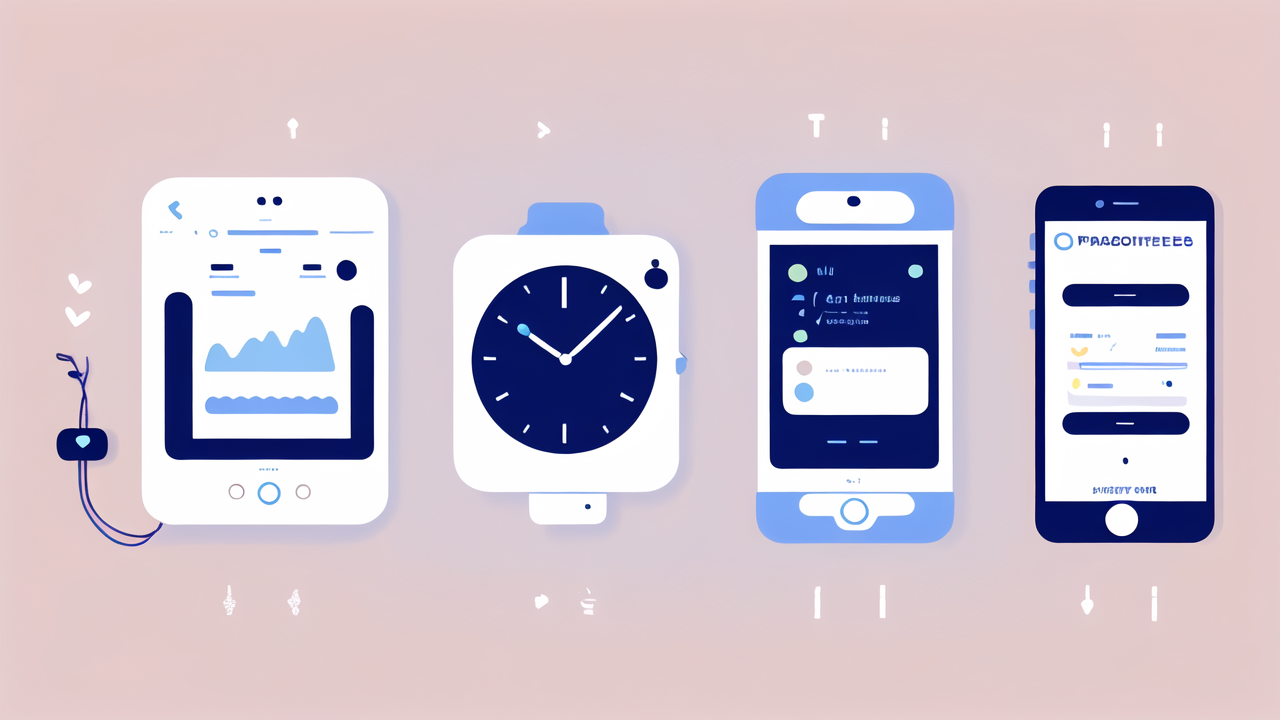Understanding the Role of Wearable Technology in Personal Fitness
The Evolution of Fitness Wearables: From Pedometers to Smart Watches
Fitness wearables have come a long way since the early days of simple pedometers. These devices once only counted steps. Now, they offer a wide range of features. Modern smart watches can track heart rate, sleep patterns, and more. They've become essential tools for fitness enthusiasts.

The journey began with basic step counters. These evolved into more advanced devices like Fitbit. Today's smart watches, like the Apple Watch or Garmin, are mini-computers on your wrist. They can monitor various health metrics and even make phone calls.
This evolution has made fitness tracking more accessible and comprehensive. Users can now get a complete picture of their health and fitness. The technology continues to improve, offering more accurate and detailed data.
Key Metrics: What to Track in Your Fitness Journey
When using fitness wearables, it's important to focus on key metrics. These can help you measure progress and stay motivated. Here are some essential metrics to track:
- Steps taken
- Heart rate
- Calories burned
- Sleep quality
- Active minutes
- Distance covered
Steps taken is a basic but crucial metric. It helps you stay active throughout the day. Heart rate monitoring can show your fitness level and workout intensity. Tracking calories burned helps with weight management goals.
Sleep quality is often overlooked but vital for overall health. Active minutes show how much time you spend exercising. Distance covered is useful for runners and cyclists.
By focusing on these metrics, you can get a clear picture of your fitness progress. This data can help you adjust your routine and reach your goals faster.
The Importance of Wearable Accuracy and User Engagement
The accuracy of fitness wearables is crucial for effective tracking. Inaccurate data can lead to misguided fitness decisions. Most modern devices are quite precise, but it's important to understand their limitations.
For example, heart rate monitors on wrists may be less accurate during high-intensity workouts. Step counters might miss some movements or count extra steps. Being aware of these issues helps users interpret their data correctly.
User engagement is equally important. The best device is useless if you don't use it regularly. Many wearables now include features to boost engagement. These might include:
- Daily goals and challenges
- Social sharing options
- Rewards for meeting targets
- Personalized insights and recommendations
These features can help keep users motivated and committed to their fitness goals. Regular use of the device ensures more comprehensive data collection. This, in turn, leads to more accurate insights and better fitness outcomes.
Best Practices for Selecting and Utilizing Fitness Tracking Devices
Comparing Top Smart Watches for Fitness Enthusiasts
Choosing the right smart watch can be overwhelming. There are many options available. Here's a brief comparison of some top choices:

- Apple Watch: Great for iPhone users. Offers comprehensive health tracking and third-party app support.
- Fitbit Versa: User-friendly with long battery life. Good for basic fitness tracking.
- Garmin Forerunner: Ideal for serious runners. Provides detailed metrics and GPS tracking.
- Samsung Galaxy Watch: Works well with Android phones. Offers a good balance of features.
When selecting a device, consider your specific needs. Think about:
- Compatibility with your smartphone
- Battery life
- Waterproof rating
- Specific features you need (e.g., GPS, sleep tracking)
- Price range
Remember, the best device is one that fits your lifestyle and you'll use consistently.
How to Ensure Optimal Placement and Usage for Accurate Readings
Proper placement and usage of your fitness tracker is key to getting accurate data. Here are some tips:
- Wear the device snugly, but not too tight.
- Place it about two fingers width above your wrist bone.
- For heart rate monitoring, wear it higher on your forearm during workouts.
- Keep the sensor clean and dry.
- Update the device's software regularly.
For sleep tracking, wear the device overnight. Some people find it more comfortable on their non-dominant hand. During workouts, make sure the device is secure and won't move around.
Remember to input your personal details accurately. This includes height, weight, and age. These factors help the device calculate metrics like calories burned more accurately.
Troubleshooting Common Issues with Wearable Technology
Even the best fitness trackers can sometimes have issues. Here are some common problems and solutions:
- Syncing problems: Restart both your device and smartphone. Check for software updates.
- Inaccurate step count: Adjust the placement on your wrist. Update your stride length in the app.
- Battery draining quickly: Turn off features you don't use. Reduce screen brightness.
- Heart rate monitor not working: Clean the sensor. Ensure the device is snug on your wrist.
- GPS not connecting: Wait for a clear signal before starting your activity.
If problems persist, check the manufacturer's support website. They often have detailed troubleshooting guides. Don't hesitate to contact customer support if needed.
Regular maintenance can prevent many issues. This includes keeping the device clean and updating its software.
Advanced Techniques in Fitness Tracking and Data Analysis
Integrating Fitness Tracking Devices with Mobile Apps and Platforms
Integrating your fitness tracker with mobile apps can enhance your experience. Most devices come with their own apps. These often sync with other health and fitness platforms.

Popular integrations include:
- MyFitnessPal for nutrition tracking
- Strava for detailed running and cycling data
- Apple Health or Google Fit for centralized health data
These integrations allow for a more comprehensive view of your health. For example, you can see how your diet affects your workouts. Or how your sleep quality impacts your daily activity level.
Some apps also offer social features. These let you compete with friends or join challenges. This can be a great motivator to stay active and reach your goals.
Remember to check your privacy settings when connecting apps. Ensure you're comfortable with the data being shared.
Analyzing Fitness Data to Inform Training and Lifestyle Choices
The data from your fitness tracker is a powerful tool. It can help you make informed decisions about your health. Here's how to use this data effectively:
- Look for patterns in your activity levels.
- Compare your sleep quality with your daily performance.
- Track how different workouts affect your heart rate and recovery time.
- Use long-term trends to set realistic goals.
For example, you might notice you're more active on days after good sleep. This could encourage you to prioritize sleep. Or you might see that your resting heart rate decreases as you get fitter.
Many apps offer insights based on your data. These can suggest ways to improve your fitness routine. Some even provide personalized workout plans based on your goals and progress.
Remember, data is most useful when acted upon. Use these insights to make small, sustainable changes to your lifestyle.
The Future of Fitness Wearables: Trends and Predictions in the United States Market
The fitness wearable market in the US continues to grow and evolve. Here are some trends and predictions:
- Increased focus on mental health tracking
- More advanced sleep analysis features
- Integration with smart home devices
- Improved accuracy in calorie tracking
- Expansion of non-wrist wearables (e.g., smart rings)
We're likely to see more emphasis on overall wellness, not just physical fitness. This includes stress tracking and mindfulness features. Sleep tracking is becoming more sophisticated, offering actionable advice for better rest.
Integration with other devices is also on the rise. Your fitness tracker might soon control your smart home based on your activity or sleep patterns. Accuracy improvements will make calorie tracking more reliable.
Non-wrist wearables are gaining popularity. These offer more discreet tracking options. As technology advances, we can expect even more innovative features in the coming years.




Leave a comment
This site is protected by hCaptcha and the hCaptcha Privacy Policy and Terms of Service apply.